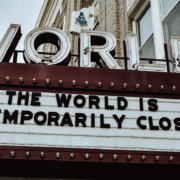Overcoming Bear Market Mindsets
The S&P 500 is down about 24% as of October 3, 2022, effectively creating a new low for the year and placing it well within a bear market by the traditional definition of 20%. The NASDAQ is down about 33%, and the DOW is down about 20%.
Any way you look at it, things are ugly.
There are two truths we must remember. The first is that bear markets are a necessity. No one ever knows long they will last or how painful they may be for investors, but they are an ever-present part of market cycles. Second, it’s likely the bear market will eventually end, and the negativity can reverse. Until then, there may be opportunities to acquire great businesses at VERY attractive prices.
But when will the bear market end? And what are we to do in the meantime?
There is no way of knowing. Think back to the last bear market in early 2020. With COVID peaking and the world seemingly shut down, the S&P 500 fell almost 34%. However, given the drop’s traumatic circumstances, the downturn was short-lived. The bear market ended just about one month later.
If we assume 2020 was an unusual bear market (considering it was the shortest of all time), we can look to the averages for more perspective. Since World War II, there have been 17 bear (or near bear) markets with an average drop of 30% and an average recovery time of about one year. Focusing on just those, accompanied by a recession, increases the drop and recovery time to 34.8% and 15 months, respectively.
Remember, this also happens to be an election year, and they tend to have more volatility than most, with an average peak to trough of about 17.1%. The good news is that a year later, the markets averaged a positive 32% return.
How much further markets will go and for how long remains to be seen. We can hope for a short-lived bear market akin to those in 2020 (1.1 months) or 2018 (3.1 months). Hopefully, it will be faster than the worst since WWII, which was 2000 (30.5 months) or 1974 (20.4 months).
Bottom line: Nobody knows how long a bear market will last. But we do know humans are emotional and tend to overreact to the emotion of fear.
Has financial news caused you to question your investments? Your financial plan? During times of stress, investors tend to fall back on emotion and a herd mentality. As a result, we default to behavior that seems “safe” but rarely serves us well. As a result, under even mild pressure, people generally make worse decisions.
One study found something as innocuous as poor weather impacts investor behavior. On cloudy days there is an increase in the perceived overvaluation of the markets for both individual stocks and the market. This leads institutional investors to make more sales on cloudy days when gloomy weather triggers gloomy emotions. If the weather can have a measurable effect on investor sentiment, imagine what the evening news can do.
Numerous studies have shown humans are terrible at forecasting risk and future emotions. Actual experiences of events are typically less scary than we imagine them.
In his book The Science of Fear, Daniel Gardner talks about the “Example Rule,” wherein the more easily we can recall examples of something happening, the more likely we perceive it to happen again. This creates a fear-based feedback loop that causes us to overestimate the likelihood of being killed by the things that make the evening news. Murder, terrorism, and pandemics become more likely causes of death for us than diabetes, obesity, or heart disease.
Similarly, the more we hear about the stock market “crashing,” the more we believe it will.
This is why a financial plan is so important. It is a time and income-specific guide, built on sound wisdom, without the stress or duress of an impending disaster du jour. It is helpful during good times and a necessity during the bad. As circumstances change, so does your perception of risk. Without a plan based on long-term perspective and experience, your goals are likely a function of how confident you are at the time. That’s why a smart time to invest in almost anything is often when it feels the worst.
But I want to make an important distinction: down markets are not a green light to dump every spare dollar you have into investments. That’s the equivalent of timing the market. Instead, recognize how important it is to stick to your plan. If your plan has you investing extra cash flow each month, keep doing it! Do not pause your routine and “wait for things to get better,” which is code for higher prices. Choosing NOT to invest is as much timing the market as investing MORE based on whatever is happening at the time.
That said, Warren Buffett is often quoted that the time to invest is when there is fear in the streets. So, I would imagine he is smiling today and doing some buying.
Markets wiggle, sometimes in our favor, and sometimes not. But letting emotion overrule the work put into your financial plan rarely works out. Sometimes the best thing to do is simple: stay the course.
Steve Booren is the Owner and Founder of Prosperion Financial Advisors, located in Greenwood Village, Colo. He is the author of Blind Spots: The Mental Mistakes Investors Make and Intelligent Investing: Your Guide to a Growing Retirement Income and a regular columnist in The Denver Post. He was recently named a Barron’s Top Financial Advisor and recognized as a Forbes Top Wealth Advisor in Colorado.









